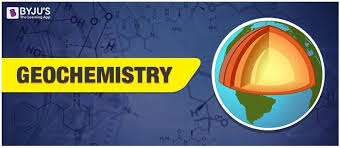
Week 1. Introduction to Geochemistry
Introduction to Geochemistry
In studying the Earth, geologists use a number of borrowed tools. Some of these come from physicists and mathematicians, others were developed by biologists, and still others by chemists. When we use the tools of chemistry, we are looking at the world as geochemists. From this broad perspective, the distinction between geochemistry and some other disciplines in geology, such as metamorphic petrology or crystallography, is a fuzzy and artificial one. The roots of geochemistry belong to both geology and chemistry. The term geochemistry was apparently used for the first time by the Swiss chemist C. F. Schönbein in 1838. The emergence of geochemistry as a separate discipline, however, came with the establishment of major laboratories at the U.S. Geological Survey in 1884. During the twentieth century, the course of geochemistry has been guided by several technological advances. The first of these was the discovery by Max von Laue (1912) that the internal arrangement of atoms in a crystalline substance can serve as a diffraction grating to scatter a beam of X-rays. Shortly after this discovery, William L. Bragg used this technique to determine the structure of halite. In the 1920s, Victor M. Goldschmidt and his associates at the University of Oslo determined the structures of a large number of common minerals, and from these structures, formulated principles regarding the distribution of elements in natural compounds.
Geochemistry utilizes the principles of chemistry to explain the mechanisms regulating the workings – past and present – of the major geological systems such as the Earth’s mantle, its crust, its oceans, and its atmosphere. Geochemistry only really came of age as a science in the 1950s, when it was able to provide geologists with the means to analyze chemical elements or to determine the abundances of isotopes, and more significantly still when geologists, chemists, and physicists managed to bridge the chasms of mutual ignorance that had separated their various fields of inquiry. Geochemistry has been at the forefront of advances in a number of widely differing domains. It has made important contributions to our understanding of many terrestrial and planetary processes, such as mantle convection, the formation of planets, the origin of granite and basalt, sedimentation, changes in the Earth’s oceans and climates, and the origin of mineral deposits, to mention only a few important issues. And the way geochemists are perceived has also changed substantially over recent decades, from laboratory workers in their white coats providing age measurements for geologists or assays for mining engineers to today’s perception of them asscientistsintheirownrightdevelopingtheirownareasofinvestigation,testingtheirown models, and making daily use of the most demanding concepts of chemistry and physics. Moreover, because geochemists generate much of their raw data in the form of chemical or isotopic analyses of rocks and fluids, the development of analytical techniques has become particularly significant within this discipline.
The Earth is a complex body whose dynamics are controlled by mechanisms that commonly work in opposing directions: differentiation mechanisms, on the one hand, maintained by fractionation of elements and isotopes between the phases arising during changes of state (melting, crystallization, evaporation, and condensation), and, on the other hand, mixing mechanisms in hybrid environments such as the ocean and detrital rocks that tend to homogenize components derived from the various geological units (rain water, granite, basalt, limestone, soil, etc.). By fractionation we mean that two elements (or two isotopes) are distributed in unequal proportions among the minerals and other chemical phases present in the same environment.
It can be seen then that the elements must be studied in terms of their properties in the context of the mineral phases and fluids accommodating them and in the context of the processes that govern changes in these phases (magmatism, erosion, and sedimentation). By mineral phase is meant all the crystals from a small neighborhood (mm to cm) that belong to the same mineral species. We will start by discussing some useful rules of inorganic and nuclear chemistry that illuminate the geochemical properties of elements. An understanding of transport mechanisms is very important in geochemistry. The term “cycle” is sometimes employed but we will see later that its meaning needs to be clarified. Conversely, the terminology used above, which emphasizes that sodium resides for a long time in the ocean or that magnesium lingers in solid residues of melting, illustrates that transfers among the different parts of the globe, such as the core, mantle, crust, and oceans, are to be considered kinetically, or, more loosely, dynamically, in terms of flows or transport rates. We will next turn our attention to the mysterious field of stable isotopes, with the idea of clarifying the principles of their fractionation in nature. Radioactive decay, which alters the atomic nucleus and therefore the nature of certain elements at rates that are unaffected by the physical, crystallographic, or chemical environment in which they occur, will allow us to include the incessant ticking of these “clocks” in our study of radioactive processes.



